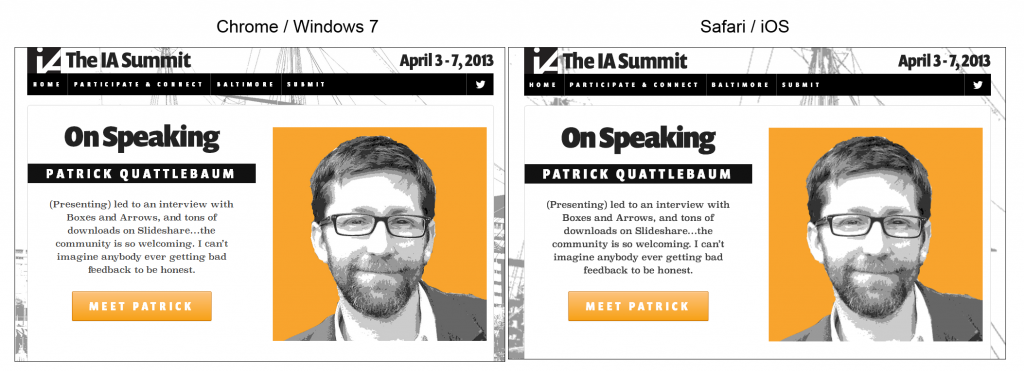An example of why I think web fonts are not ready for prime time. Nothing against the IA Summit folks: I could have chosen any one of a million sites using web fonts, but I happened across this one this morning, and had to share. (Click on the image for the full-resolution version.)
The image on the left is the page rendered in Chrome/Win7. The quality of the text rendering is horrible. The heavy aliasing smudges the characters and fills in the negative space, most noticably in the menu bar. The quote text in the middle of the page looks like it was set in some serif version of a Ransom font.
The image on the right is the same page rendered in Safari/iOS. Better, and while there is still to my eye too much aliasing on the type, the text is easier to read than with the Chrome/Win7 version. At least the page doesn’t look broken.
I think I need to spend more time trying to see if there are ways to do web fonts properly. I know that the team here at McGill responsible for our web management system made a special effort to improve the quality of the web fonts used, and the improvement was noticeable (although I’m still not entirely satisfied). Is the problem inherent with web fonts, with the way browsers render web fonts, or with the way they are implemented?
My guess is that the problem is that web fonts look best on Mac OS / iOS, that most web designers are using Macs, and are not bothering to ensure that the technology works on other platforms. This is one of the greatest sins a web designer can make, and reeks of the browser-specific designs of the 1990’s.
As an admirer of fine typography, I want web fonts to work, but it is clear that we are a long way off. I would encourage designers to think carefully before using web fonts in their projects, if only to preserve the readability and overall aesthetic appeal of the Web.


